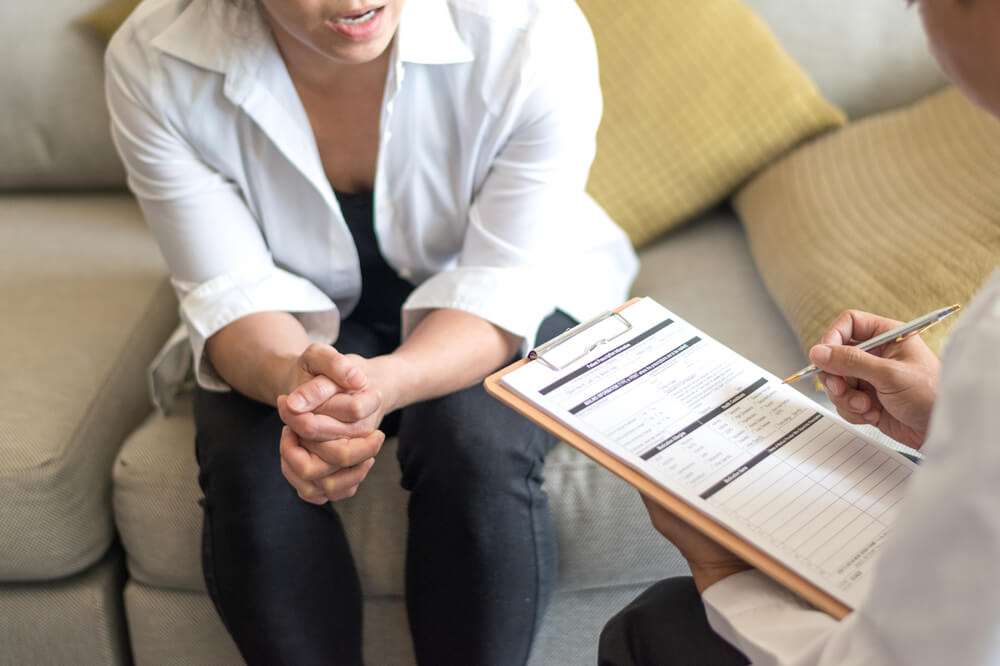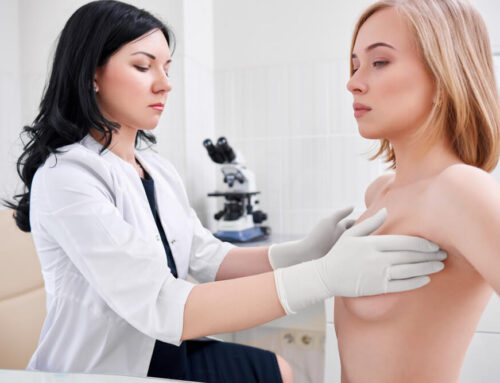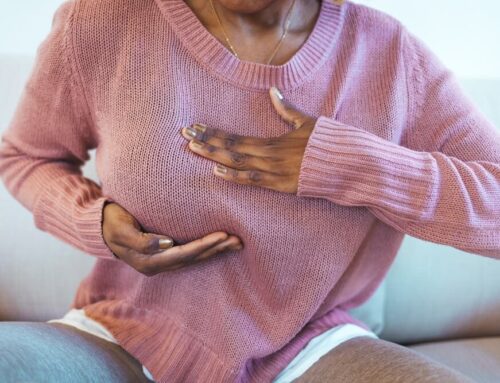If you are a woman who always has lumps in her breasts, you may have fibrocystic breast disease. This term is, in fact, archaic within the medical community. Our doctors at the breast care center of Miami now use the term fibrocystic breasts. The condition is not unusual because more than 50% of women experience it at some point. Usually, the condition develops before women hit menopause. If you think you might be one of those women or you love someone with this condition, then read on for more information.
What Is Fibrocystic Breasts Disease?
Fibrocystic breasts contain tissue that is compressed. The compressed tissue becomes rope-like or lumpy. Many women have no symptoms at all. Others have pain in the upper and outer parts of their breasts, especially right before menstruation.
Doctors look for several symptoms when diagnosing fibrocystic breasts. The compressed areas of the breast blend into the unaffected breast tissue. Most women with the disease are likely to complain about pain spread across their breasts as opposed to an isolated location. Some women will notice a brown or green discharge from the nipple without any pressure being applied to the breast. Changes in the breast can occur on both sides. Women are more likely to feel pain between ovulation and at the beginning of their period.

What Does Fibrocystic Breast Disease Look Like?
When the compressed tissue from a person with fibrocystic breasts is examined under a microscope, doctors see several things. They see fluid-filled round or oval sacs. While doctors are not sure what causes these to form, their educated guess is that it is due to the body’s reaction to hormones.
They also see scar-like fibrous tissue. This tissue can feel firm or rubbery. Again, doctors are not sure, but they think it is the body’s reaction to hormone level changes.
Fibrocystic breasts may also have more cells lining the milk ducts and have more milk-producing tissue. Doctors at our breast care center of Miami call this hyperplasia. If you have an abundance of cells lining the milk tubes, doctors refer to this as ductal hyperplasia. If the mass of cells is in the milk glands, however, then it is lobular hyperplasia. When studied under a microscope, the cells will be round or atypical. If they are round, doctors consider this to be normal. If they are atypical, doctors may want to do further testing.
When your doctor sees signs that your fibrocystic breasts have hyperplasia, it is vital to follow your doctor’s advice. According to the American Cancer Society, women with hyperplasia without abnormal cells are at a 1.5-2 times higher risk of getting breast cancer. Those with atypical cells are at 4-5 times higher risk.
When Should You Consult a Doctor About Fibrocystic Breast Disease?
Women who have fibrocystic breasts sometimes have trouble with monthly breast exams due to the pain associated with the disease. These exams are vital in the fight to catching breast cancer early, though. If caught early, it is much easier to treat at a comprehensive breast care center Miami. You should contact a doctor if you have specific areas of your breasts that are always in pain. If you have been evaluated for a lump in your breast in the past but it has changed, you will need a reevaluation.
Additionally, set up an appointment if you have pain in your breast that does not go away after your period. This breast pain is considered non-cyclic breast pain and can be a sign of a benign growth or cancer. Most women describe this type of pain as tightness or burning sensation instead of the heavy, aching pain usually experienced with fibrocystic breasts. While women with fibrocystic breasts typically have pain evenly across both breasts, non-cyclic breast pain is usually more localized. While fibrocystic breast disease is more likely to occur in women who still have their periods, non-cyclic breast pain is more likely to occur in women after menopause.
What Tests May a Doctor Order for Women With Fibrocystic Breasts?
A doctor at a comprehensive breast care center Miami may recommend that you get a mammogram. This procedure allows doctors to see the inside of your breast. They can then determine if there are any changes that may be an early sign of breast cancer. You should be getting mammograms regularly, depending on your age. A mammogram uses a special machine that compresses the breasts and takes X-rays of the inside of the breasts. While some women find the mammogram uncomfortable, it does not hurt and is over in just a few minutes.
If the mammogram shows no signs of abnormalities, then typically, nothing else needs to be done. If the mammogram shows areas of concern, the doctor may order an ultrasound. The ultrasound machine uses sound waves to capture what is happening inside your breast. It allows doctors to track how blood is flowing through the breast, which can hold vital clues to discovering if your breast is normal.

The doctor may also order an MRI. The MRI machine uses magnets to create a cross-sectional picture of your breast. This procedure allows doctors to see soft tissue that is often hard to see using other testing techniques.
Finally, the doctor may order a breast biopsy. Usually, a needle biopsy is used, but doctors have other choices. While you are lying on a table, the doctor uses one hand to hold the lump while using the other hand to guide a tube with a needle attached to the lump. A small sample of the lump is collected so that doctors can study the tissue under a microscope.
How Can You Treat Fibrocystic Breast Syndrome at Home?
For most women, there is no need to worry if they have fibrocystic breasts. If the pain becomes a problem, then treat it with your favorite over-the-counter painkiller. Laying a warm compress on the painful area often helps alleviate pain. Some women find that avoiding caffeine lessens the symptoms. You may want to stop drinking sodas and coffee to see if that helps. Be sure to look at other foods and drinks in your diet that have caffeine. Many supplements contain some caffeine. You may also want to limit your intake of chocolate and energy drinks.
If you are concerned about changes in your breasts, reach out to our center. Our team of professionals will be glad to discuss your concerns with you and answer your questions. We are skilled at helping women through each step of the process. You are sure to love the level of compassionate care you receive at our center, where every staff member is dedicated to keeping on top of the latest changes in the industry. Contact our office today to schedule an appointment.






